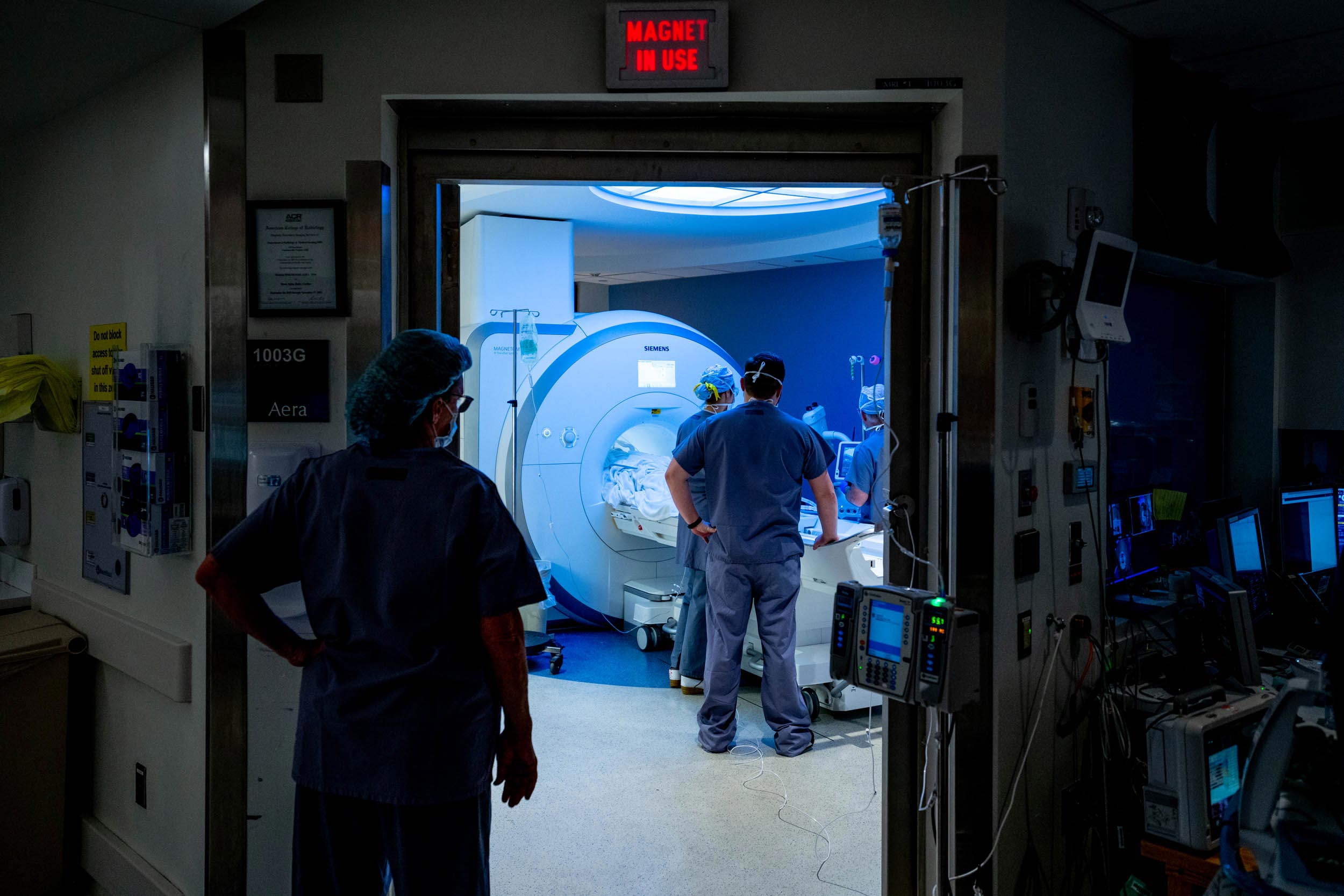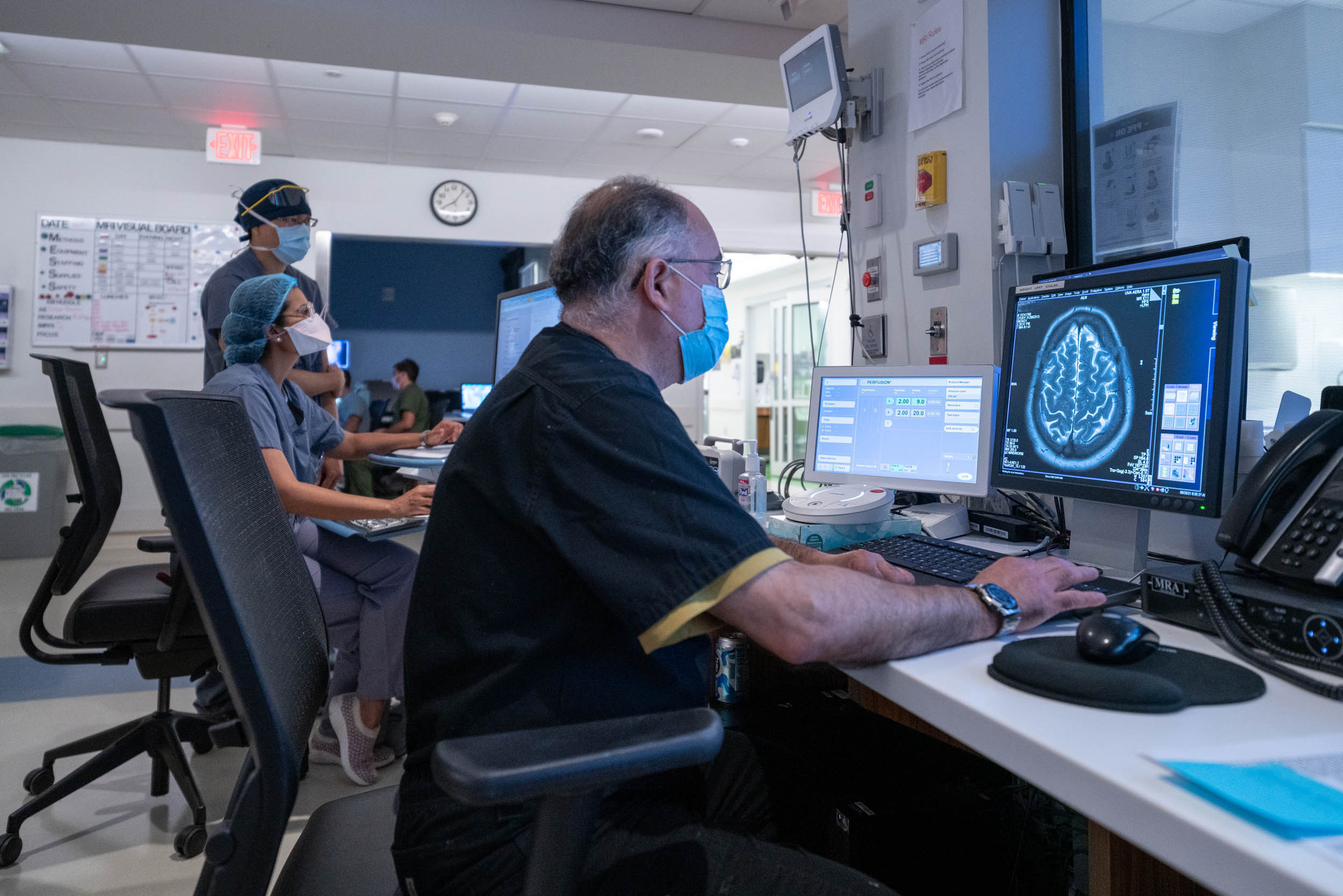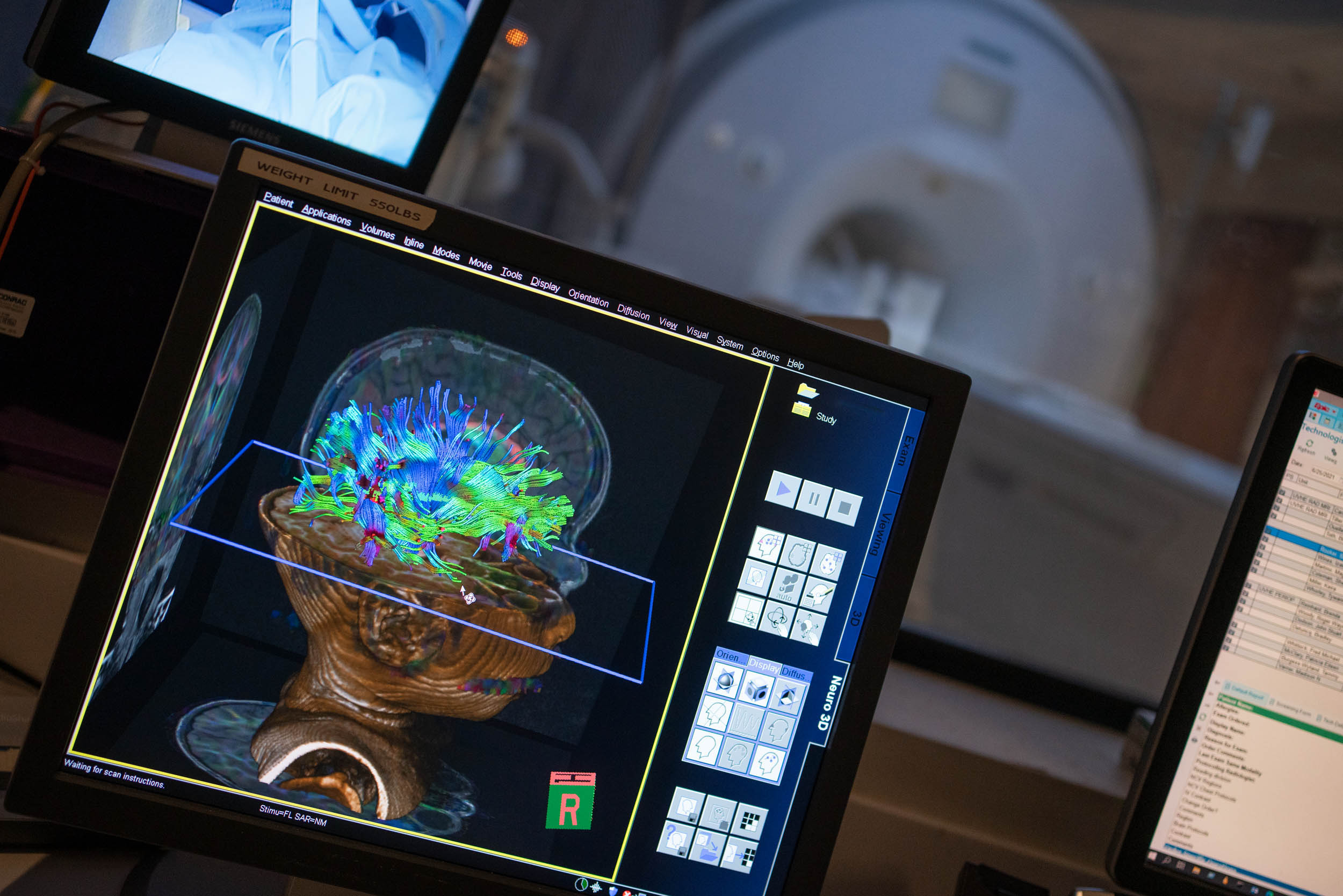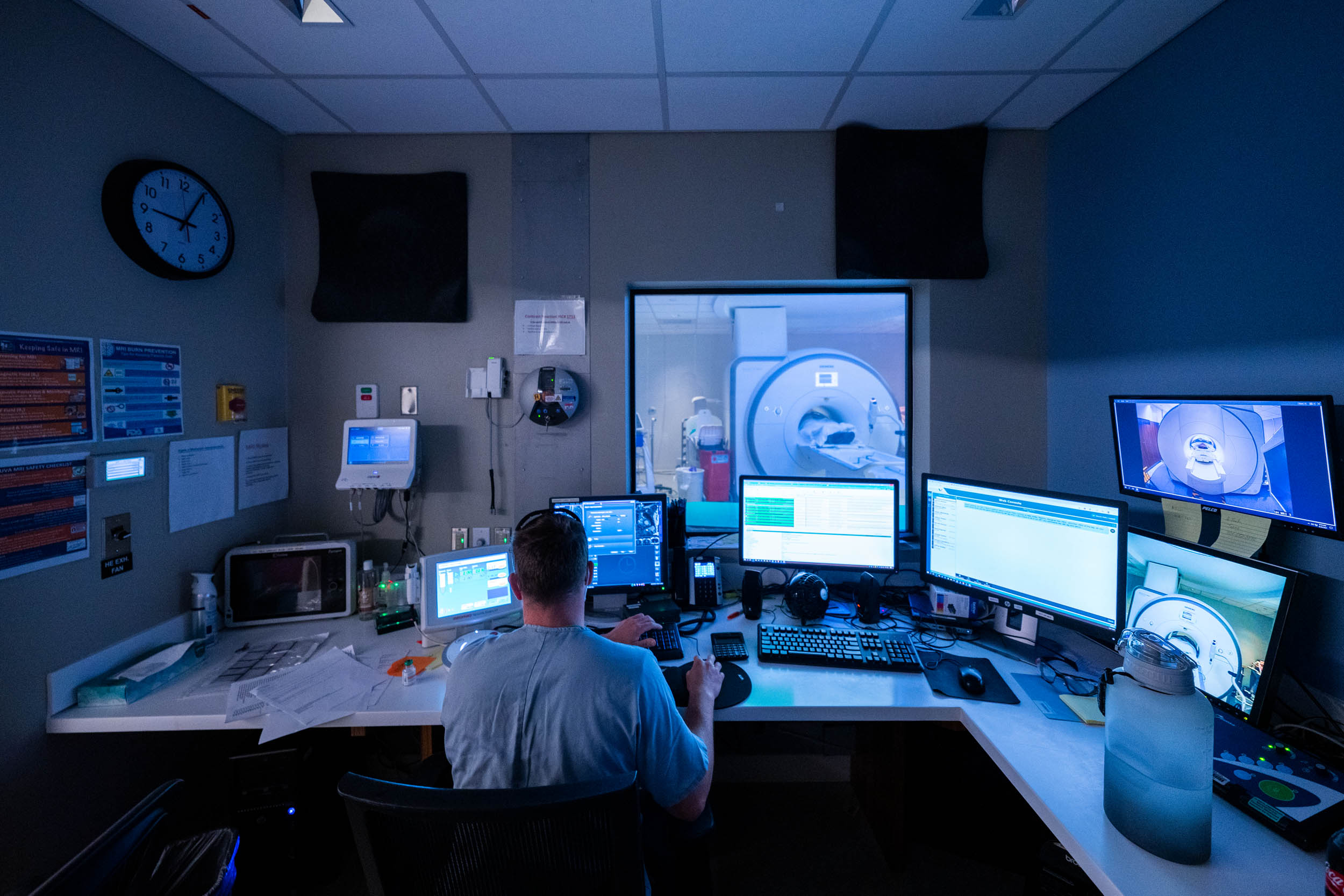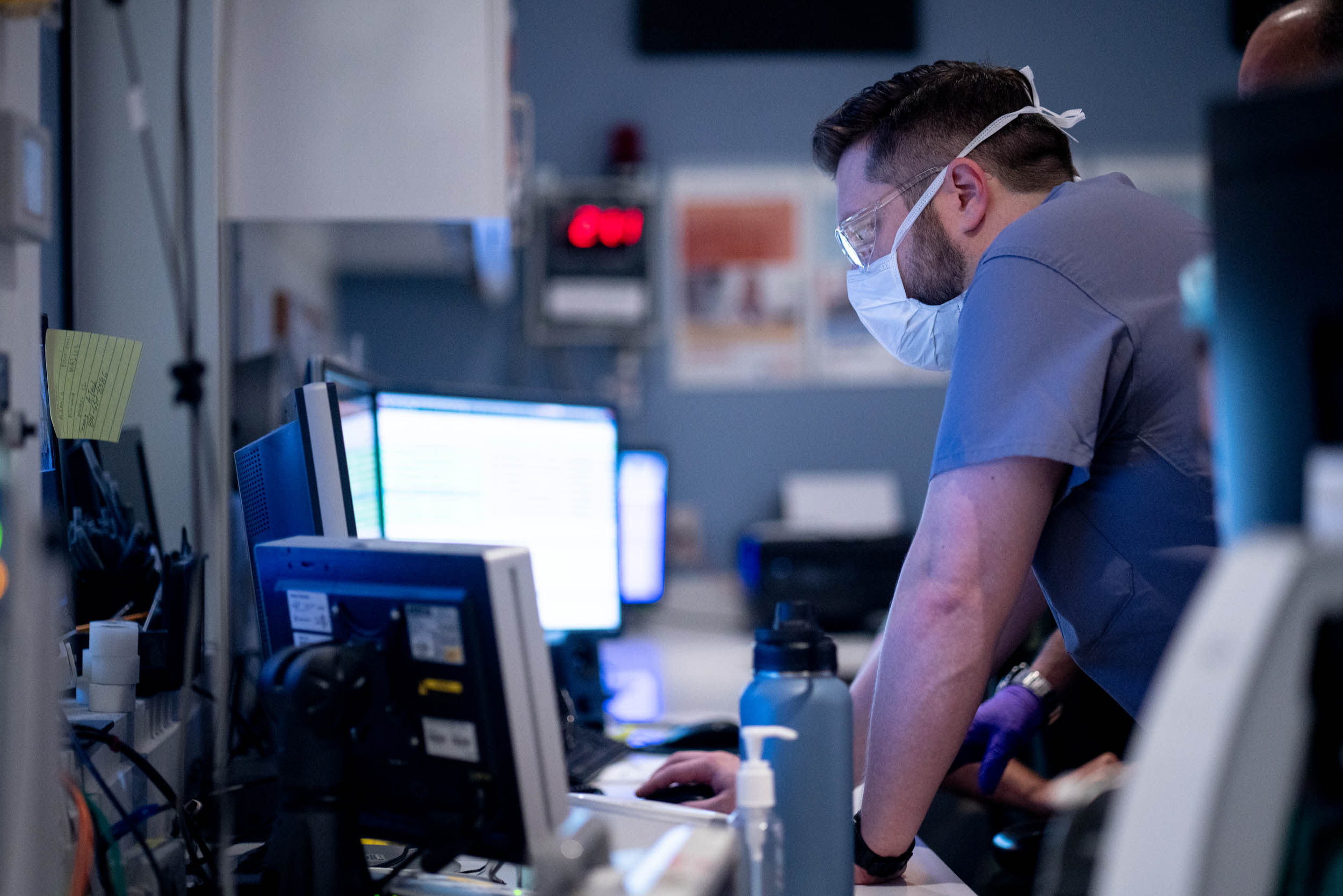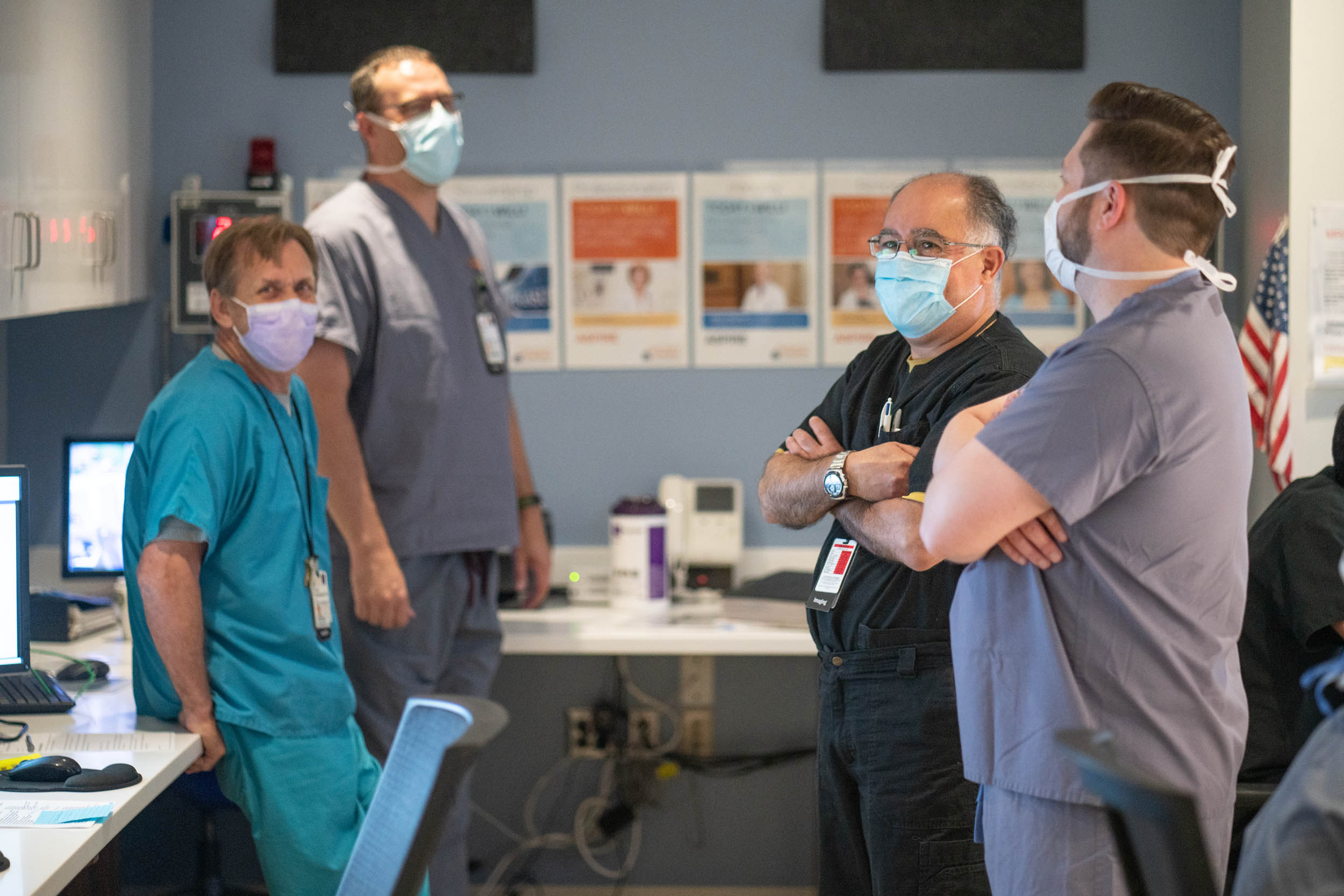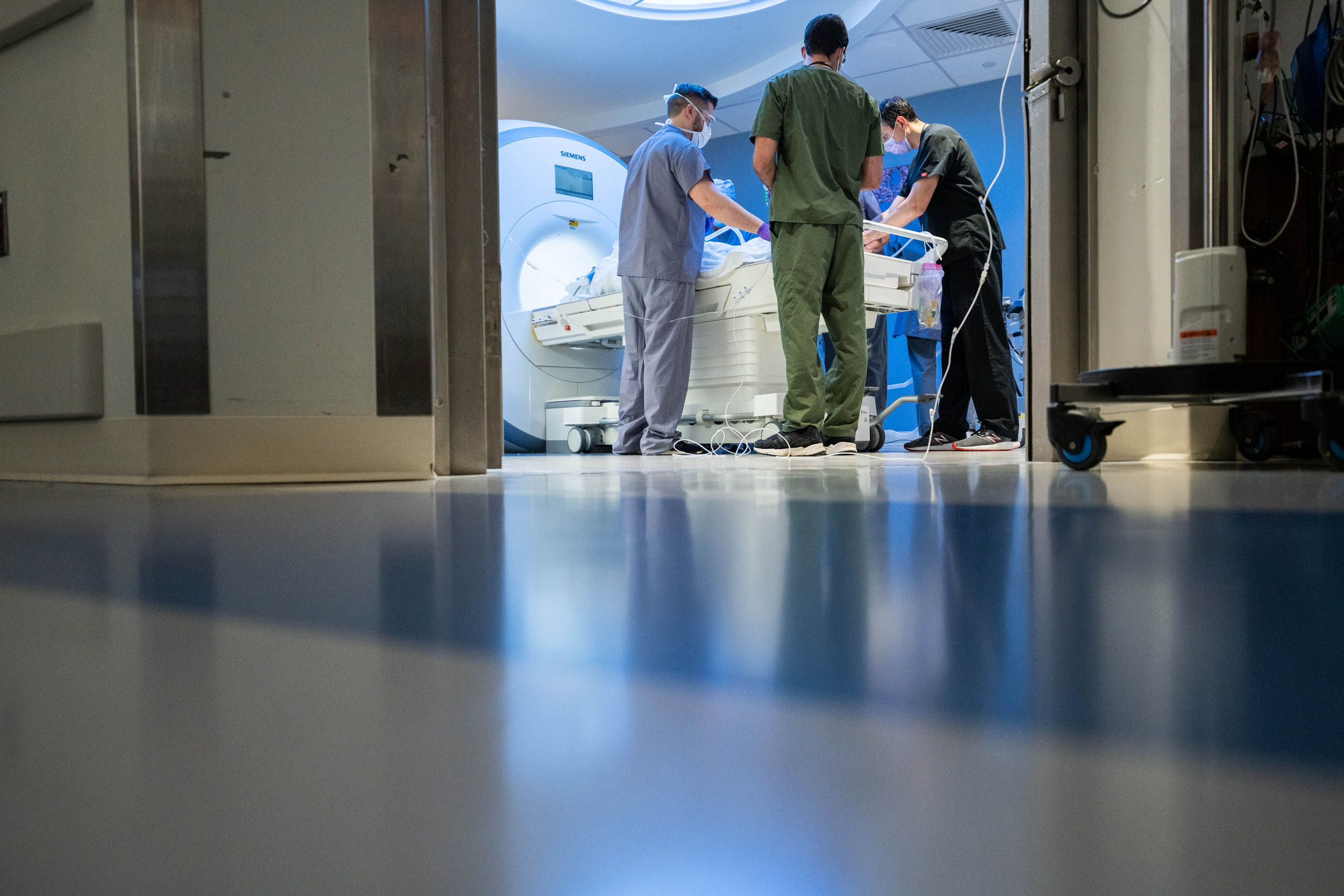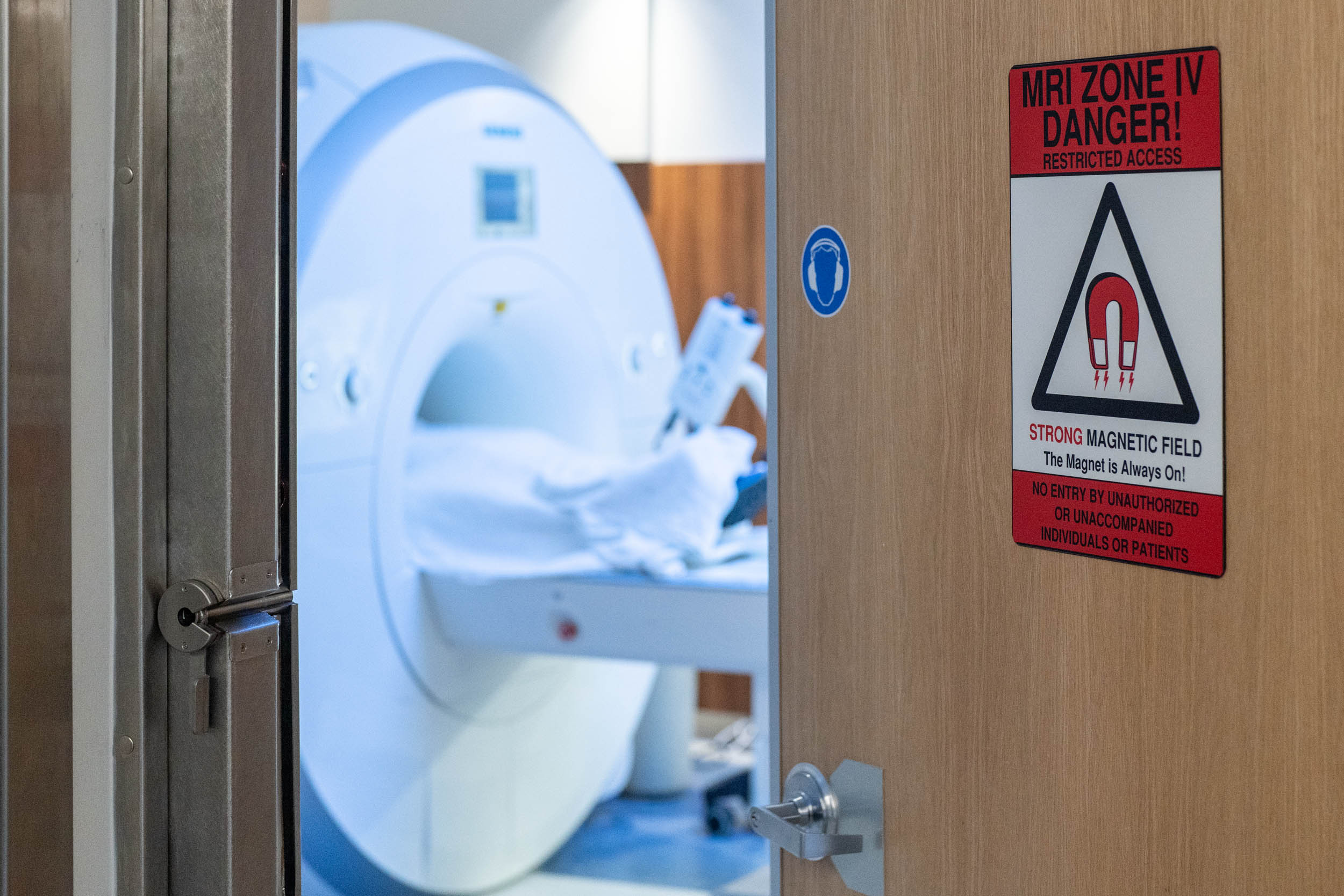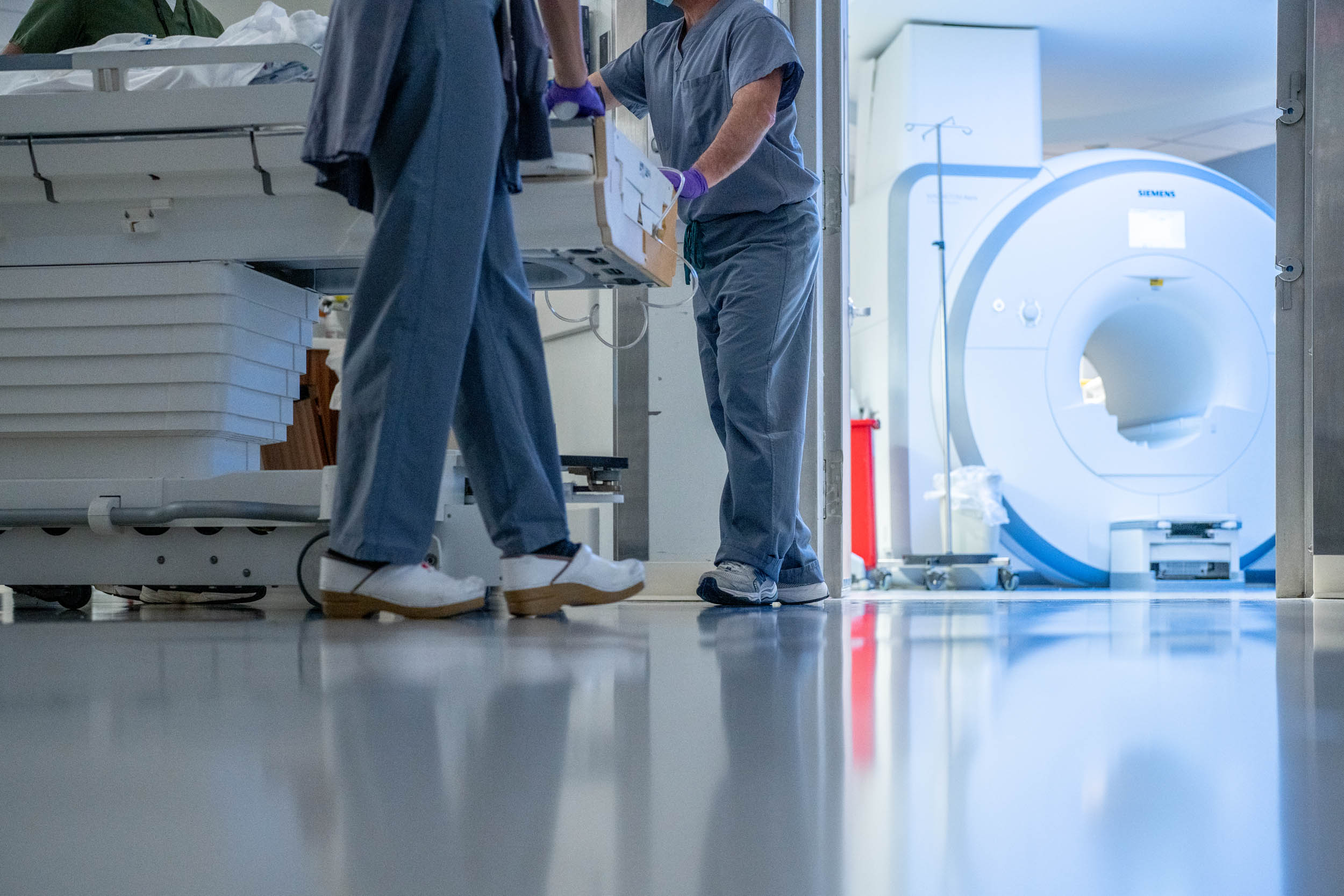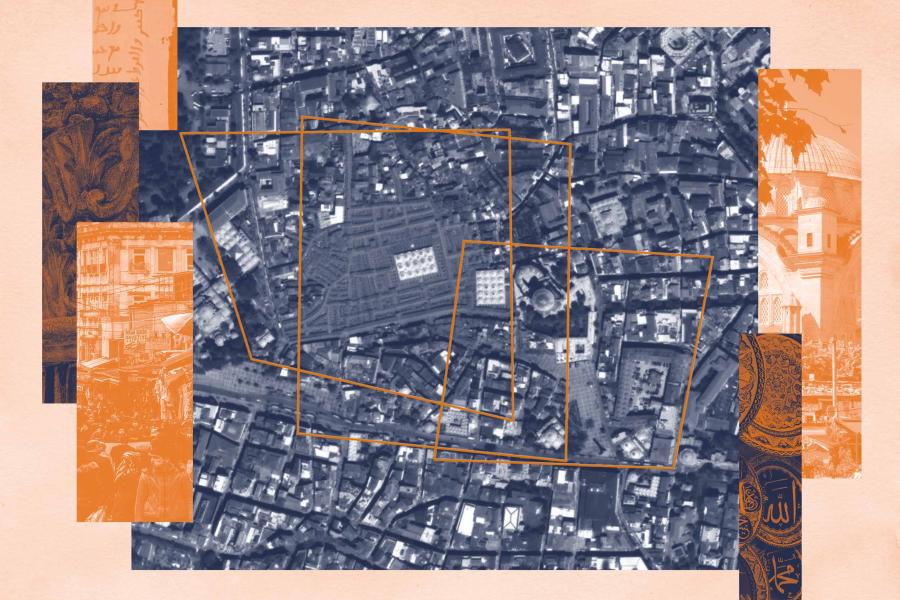Lead MRI tech Thomas Huerta says that the variety of the work is its own reward; it means that he and his team can touch almost every corner of the UVA and Charlottesville community, and well beyond.
“We do so many different types of MRI here at UVA, and treat kids as young as 4 years old all the way through adulthood,” he said.
MRI scanners use radio frequency waves to create digital images of the inside of the body. Unlike X-rays, the MRI scans show soft tissue and can be used to examine any part of the body, from head to toe. The scans help doctors diagnose various conditions, look for internal injuries, or see if a medication or treatment is working for diseases like cancer. UVA has three MRI scanners at its main hospital, with additional research scanners housed at Fontaine Research Park.
Huerta said UVA’s team of MRI technicians came to the job via many different career and education pathways. He was first introduced to MRI technology in the military, when he trained as a U.S. Army X-ray technician after serving in the airborne infantry. While working at Fort Bragg, North Carolina, he saw an MRI for the first time and was immediately intrigued; you could see so much more than he was used to seeing on X-rays.
“I said right then I was going to do that one day,” he recalled. He pursued MRI certification immediately after leaving the Army. MRI technicians are typically trained as X-ray technicians first and then attend a one-year MRI training program, either through a school or through a job training program.
Technicians’ attention to detail is critical because their scans help doctors determine exactly where and how to deliver treatment. The best reward, Huerta said, is hearing that a scan helped doctors uncover the source of a problem or find a new way to treat someone.
Huerta invited UVA Today to take a look around the MRI unit to see what goes into that work and give readers a window into this common-but-complex diagnostic procedure.
Here’s what it looks like.
